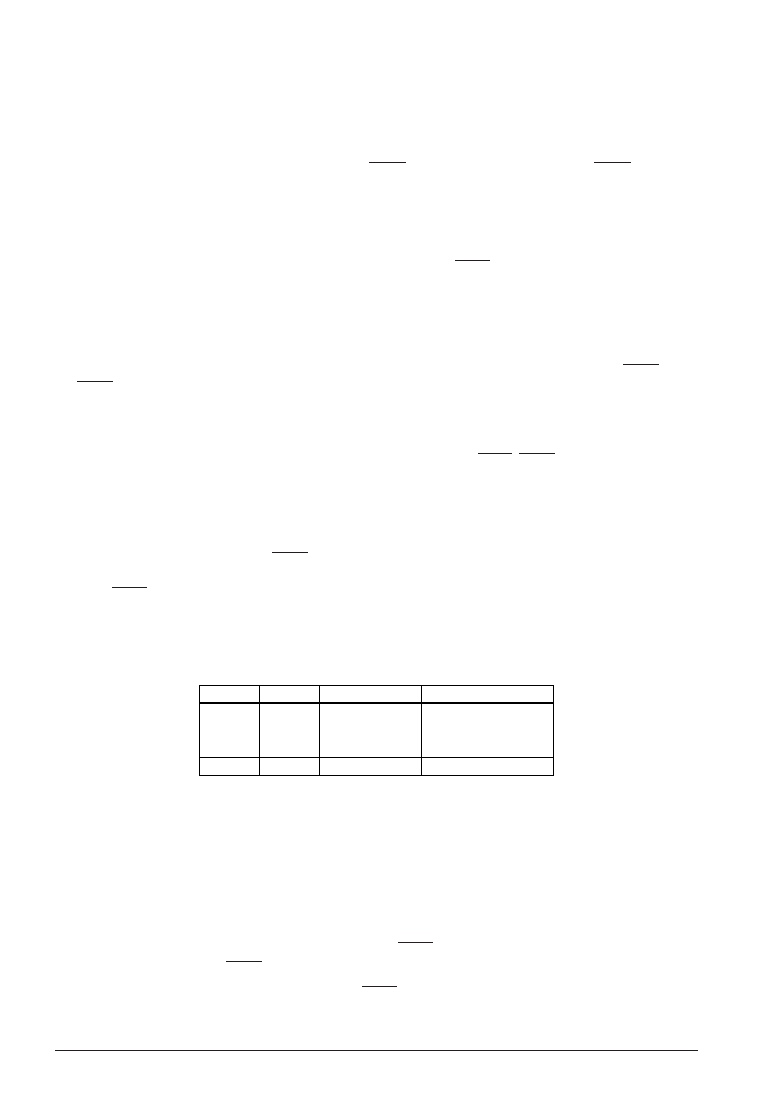- 您現(xiàn)在的位置:買(mǎi)賣(mài)IC網(wǎng) > PDF目錄98068 > S1C63458F0A0100 MICROCONTROLLER, PQFP144 PDF資料下載
參數(shù)資料
| 型號(hào): | S1C63458F0A0100 |
| 元件分類(lèi): | 微控制器/微處理器 |
| 英文描述: | MICROCONTROLLER, PQFP144 |
| 封裝: | QFP-144 |
| 文件頁(yè)數(shù): | 132/144頁(yè) |
| 文件大小: | 1156K |
| 代理商: | S1C63458F0A0100 |
第1頁(yè)第2頁(yè)第3頁(yè)第4頁(yè)第5頁(yè)第6頁(yè)第7頁(yè)第8頁(yè)第9頁(yè)第10頁(yè)第11頁(yè)第12頁(yè)第13頁(yè)第14頁(yè)第15頁(yè)第16頁(yè)第17頁(yè)第18頁(yè)第19頁(yè)第20頁(yè)第21頁(yè)第22頁(yè)第23頁(yè)第24頁(yè)第25頁(yè)第26頁(yè)第27頁(yè)第28頁(yè)第29頁(yè)第30頁(yè)第31頁(yè)第32頁(yè)第33頁(yè)第34頁(yè)第35頁(yè)第36頁(yè)第37頁(yè)第38頁(yè)第39頁(yè)第40頁(yè)第41頁(yè)第42頁(yè)第43頁(yè)第44頁(yè)第45頁(yè)第46頁(yè)第47頁(yè)第48頁(yè)第49頁(yè)第50頁(yè)第51頁(yè)第52頁(yè)第53頁(yè)第54頁(yè)第55頁(yè)第56頁(yè)第57頁(yè)第58頁(yè)第59頁(yè)第60頁(yè)第61頁(yè)第62頁(yè)第63頁(yè)第64頁(yè)第65頁(yè)第66頁(yè)第67頁(yè)第68頁(yè)第69頁(yè)第70頁(yè)第71頁(yè)第72頁(yè)第73頁(yè)第74頁(yè)第75頁(yè)第76頁(yè)第77頁(yè)第78頁(yè)第79頁(yè)第80頁(yè)第81頁(yè)第82頁(yè)第83頁(yè)第84頁(yè)第85頁(yè)第86頁(yè)第87頁(yè)第88頁(yè)第89頁(yè)第90頁(yè)第91頁(yè)第92頁(yè)第93頁(yè)第94頁(yè)第95頁(yè)第96頁(yè)第97頁(yè)第98頁(yè)第99頁(yè)第100頁(yè)第101頁(yè)第102頁(yè)第103頁(yè)第104頁(yè)第105頁(yè)第106頁(yè)第107頁(yè)第108頁(yè)第109頁(yè)第110頁(yè)第111頁(yè)第112頁(yè)第113頁(yè)第114頁(yè)第115頁(yè)第116頁(yè)第117頁(yè)第118頁(yè)第119頁(yè)第120頁(yè)第121頁(yè)第122頁(yè)第123頁(yè)第124頁(yè)第125頁(yè)第126頁(yè)第127頁(yè)第128頁(yè)第129頁(yè)第130頁(yè)第131頁(yè)當(dāng)前第132頁(yè)第133頁(yè)第134頁(yè)第135頁(yè)第136頁(yè)第137頁(yè)第138頁(yè)第139頁(yè)第140頁(yè)第141頁(yè)第142頁(yè)第143頁(yè)第144頁(yè)

78
EPSON
S1C63458 TECHNICAL MANUAL
CHAPTER 4: PERIPHERAL CIRCUITS AND OPERATION (Serial Interface)
4.11.2 Mask option
(1) Terminal specification
Since the input/output terminals of the serial interface is shared with the I/O ports (P10–P13), the
mask option that selects the output specification for the I/O port is also applied to the serial interface.
The output specification of the terminals SOUT, SCLK (during the master mode) and SRDY (during
the slave mode) that are used as output in the input/output port of the serial interface is respectively
selected by the mask options of P11, P12 and P13. Either complementary output or N-channel open
drain output can be selected as the output specification. However, when N-channel open drain output
is selected, do not apply a voltage exceeding the power supply voltage to the terminal.
Furthermore, the pull-up resistor for the SIN terminal and the SCLK terminal (during slave mode)
that are used as input terminals can be selected by the mask options of P10 and P12.
When "without pull-up" is selected, take care that the floating status does not occur.
(2) Polarity of synchronous clock and ready signal
Polarity of the synchronous clock and the ready signal that is output in the slave mode can be selected
from either positive polarity (high active, SCLK & SRDY) or negative polarity (low active, SCLK &
SRDY).
When operating the serial interface in the slave mode, the synchronous clock is input from a external
device. Be aware that the terminal specification is pull-up only and a pull-down resistor cannot be
built in if positive polarity is selected.
In the following explanation, it is assumed that negative polarity (SCLK, SRDY) has been selected.
4.11.3 Master mode and slave mode of serial interface
The serial interface of the S1C63458 has two types of operation mode: master mode and slave mode.
The master mode uses an internal clock as the synchronous clock for the built-in shift register, and
outputs this internal clock from the SCLK (P12) terminal to control the external (slave side) serial device.
In the slave mode, the synchronous clock output from the external (master side) serial device is input
from the SCLK (P12) terminal and it is used as the synchronous clock for the built-in shift register.
The master mode and slave mode are selected by writing data to the SCS1 and SCS0 registers.
When the master mode is selected, a synchronous clock may be selected from among 3 types as shown in
Table 4.11.3.1.
Table 4.11.3.1 Synchronous clock selection
SCS1
1
0
SCS0
1
0
1
0
Mode
Master mode
Slave mode
Synchronous clock
OSC1
OSC1 /2
Programmable timer
External clock
The maximum clock is limited to 1 MHz.
When the programmable timer is selected, the signal that is generated by dividing the underflow signal
of the programmable timer (timer 1) in 1/2 is used as the synchronous clock. In this case, the program-
mable timer must be controlled before operating the serial interface. Refer to Section 4.10, "Programmable
Timer" for the control of the programmable timer.
At initial reset, the slave mode (external clock mode) is selected.
Moreover, the synchronous clock, along with the input/output of the 8-bit serial data, is controlled as
follows:
In the master mode, after output of 8 clocks from the SCLK (P12) terminal, clock output is automati-
cally suspended and the SCLK (P12) terminal is fixed at high level.
In the slave mode, after input of 8 clocks to the SCLK (P12) terminal, subsequent clock inputs are
masked.
相關(guān)PDF資料 |
PDF描述 |
|---|---|
| S1C63466D | 4-BIT, MROM, 4.1 MHz, MICROCONTROLLER, UUC140 |
| S1C63466F | 4-BIT, MROM, 4.1 MHz, MICROCONTROLLER, PQFP144 |
| S1C63567F0A0100 | MICROCONTROLLER, PQFP144 |
| S1C63653F | 4-BIT, FLASH, 4 MHz, MICROCONTROLLER, CQFP100 |
| S1C6F567D0A0100 | MICROCONTROLLER, UUC141 |
相關(guān)代理商/技術(shù)參數(shù) |
參數(shù)描述 |
|---|---|
| S1C63557D04Q000 | 制造商:Seiko Instruments Inc (SII) 功能描述:EPSON MCU 4BIT |
| S1C63567 | 制造商:EPSON 制造商全稱(chēng):EPSON 功能描述:4-bit Single Chip Microcomputer |
| S1C63616 | 制造商:EPSON 制造商全稱(chēng):EPSON 功能描述:4-bit Single Chip Microcomputer |
| S1C63632 | 制造商:EPSON 制造商全稱(chēng):EPSON 功能描述:4-bit Single Chip Microcomputer |
| S1C63653 | 制造商:EPSON 制造商全稱(chēng):EPSON 功能描述:CMOS 4-bit Single Chip Microcontroller |
發(fā)布緊急采購(gòu),3分鐘左右您將得到回復(fù)。